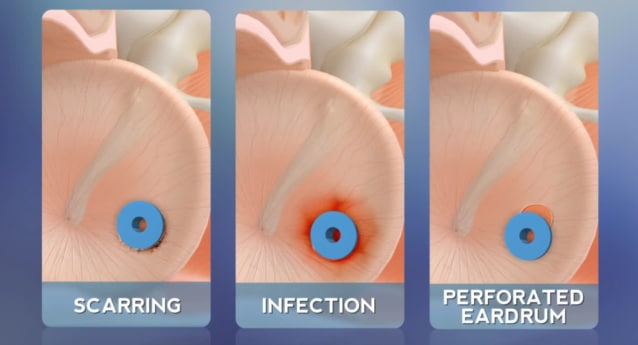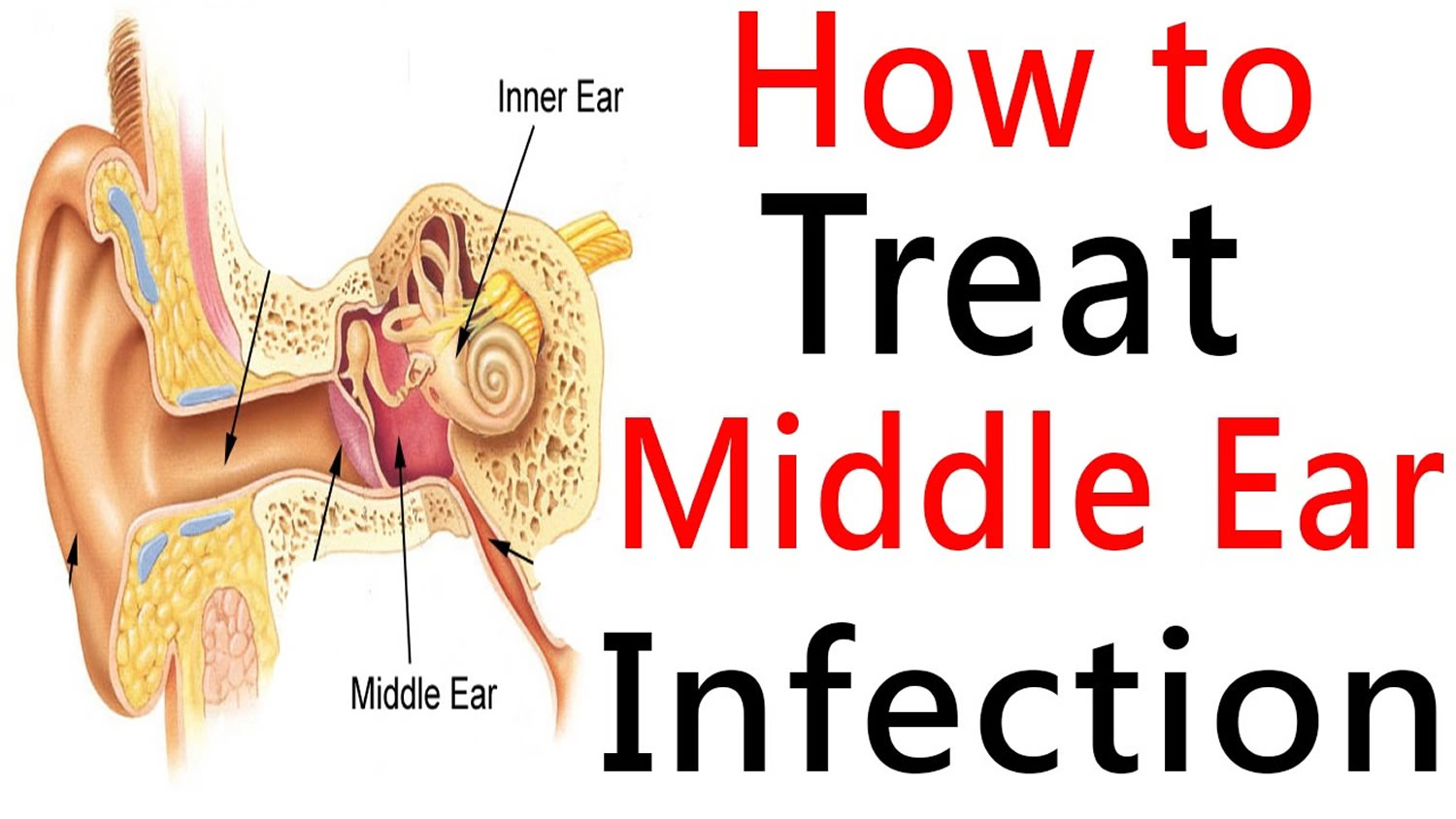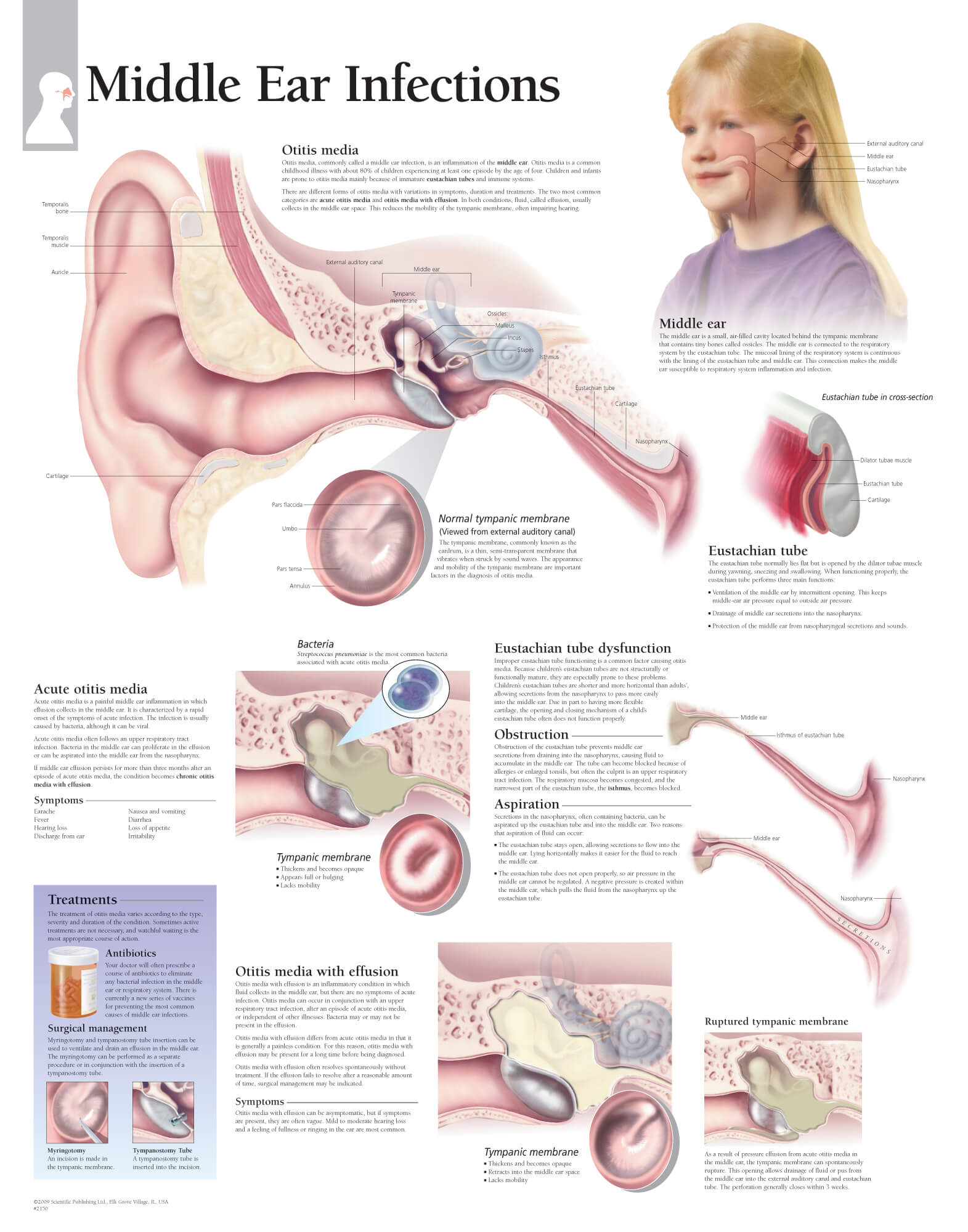
Untreated infections or infections that don't respond well to treatment can spread to nearby tissues.

If hearing is temporarily or permanently impaired in infants and toddlers, they may experience delays in speech, social and developmental skills. If there is some permanent damage to the eardrum or other middle ear structures, permanent hearing loss may occur. Ear infections that happen again and again, or fluid in the middle ear, may lead to more-significant hearing loss. Mild hearing loss that comes and goes is fairly common with an ear infection, but it usually gets better after the infection clears. Ear infections that happen again and again can lead to serious complications: Most ear infections don't cause long-term complications. Differences in the bone structure and muscles in children who have cleft palates may make it more difficult for the eustachian tube to drain. Ear infections are more common among Alaska Natives. Exposure to tobacco smoke or high levels of air pollution can increase the risk of ear infections. People with seasonal allergies may have a greater risk of ear infections when pollen counts are high. Ear infections are most common during the fall and winter. Babies who drink from a bottle, especially while lying down, tend to have more ear infections than do babies who are breast-fed. The children in group settings are exposed to more infections, such as the common cold. Children cared for in group settings are more likely to get colds and ear infections than are children who stay home. Children between the ages of 6 months and 2 years are more susceptible to ear infections because of the size and shape of their eustachian tubes and because their immune systems are still developing. “She heard birds chirping for the first time and was so excited,” Brittany said.īut the best part? When her daughter said, “Mama. “She cried for about a minute and then was high-fiving Dr. “They wrapped her up kind of like an extreme swaddle and I was holding her hand and he went in and super-fast one ear was done and then the other and we’re done,” mom Brittany Clapp said. Liu performed a Hummingbird procedure on Cassidy in April. Cedars-Sinai was one of the initial eight institutions across the country involved in clinical trials of the Hummingbird and now the Food and Drug Administration is looking at expanding the approval to older children as well. The Hummingbird is shaped like its namesake bird and is a single-pass device, meaning that when the needle enters the ear canal, the tube is automatically inserted.Īlthough the Hummingbird was approved two years ago, the pandemic prevented many parents from learning about this new option. The best part, according to Liu: The child is feeling and hearing better within minutes. “The entire process, by the time we get the child into the room, into position, clean out the ears and put in the tubes is four to five minutes,” said Liu. A New DeviceĪ device called the Hummingbird is a game changer for parents, Liu said.

Surgeons poke a hole in the eardrum, drain all the excess fluid and insert the small plastic tube to lessen the pressure and give the fluid a different pathway out of the ear.ĭespite the fact that the actual procedure is quick, surgery is often a full-day ordeal for the young child, with no eating or drinking, an early check-in, post-anesthesia grogginess and, often, nausea. Traditionally, the placement is done under anesthesia in an operating room. Liu routinely places ear tubes in young children’s ears.


“It can muffle the hearing and delay speech and language development,” Liu said. Liu, an ear, nose and throat specialist who is also the president of the Cedars-Sinai Medical Group and the director of Academic Otolaryngology for Cedars-Sinai Medical Center, says fluid that gets trapped in the middle ear can sit there for months. “It just seemed like a lot of risk and my mom had bad reactions to anesthesia and I didn’t want Cassidy to go through that,” Brittany said.Īfter numerous calls and doctor visits, the parents made their way to Gene Liu, MD, at Cedars-Sinai Guerin Children's. Still, the family was hesitant to have Cassidy undergo surgical anesthesia at such a young age. ”She always sounded like she was underwater and she didn’t have a lot of speech.”īrittany and her husband, Charlie, tried as many natural remedies as they could to clear Cassidy’s ears-including acupuncture-but nothing worked. “I think her hearing was 70% affected, by the fluid buildup” said Cassidy’s mother, Brittany Clapp. But when her Orange County pediatrician noticed the fluid wasn’t draining out of Cassidy’s ear, he recommended inserting tubes into the toddler’s ears. Usually, an ear infection diagnosis meant Cassidy would undergo a round of antibiotics. Like a lot of young children, from the time she was a year old, Cassidy Clapp was plagued by one ear infection after another.


 0 kommentar(er)
0 kommentar(er)
